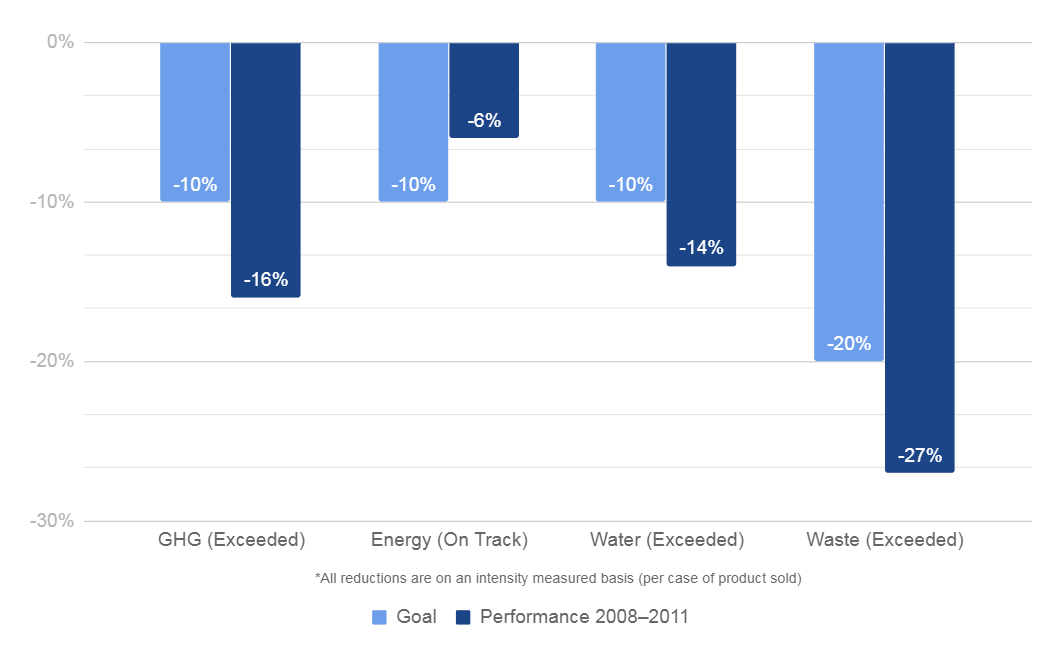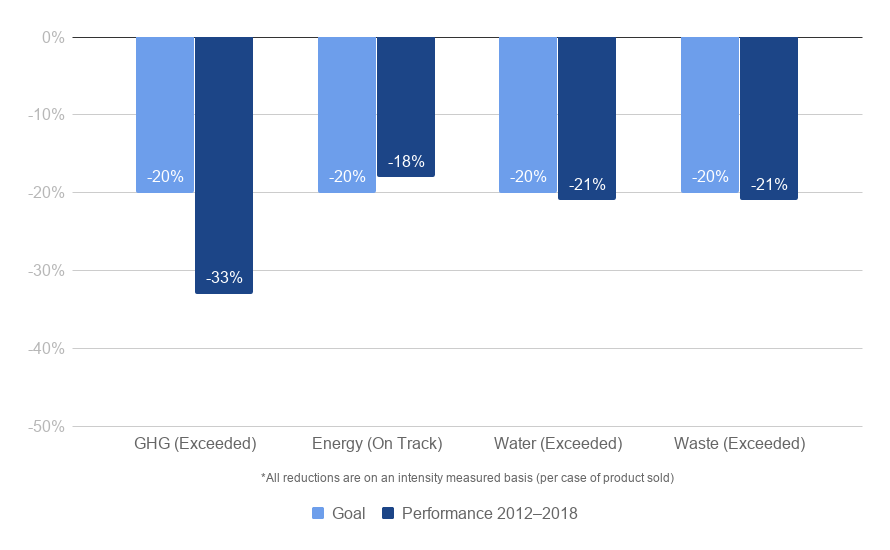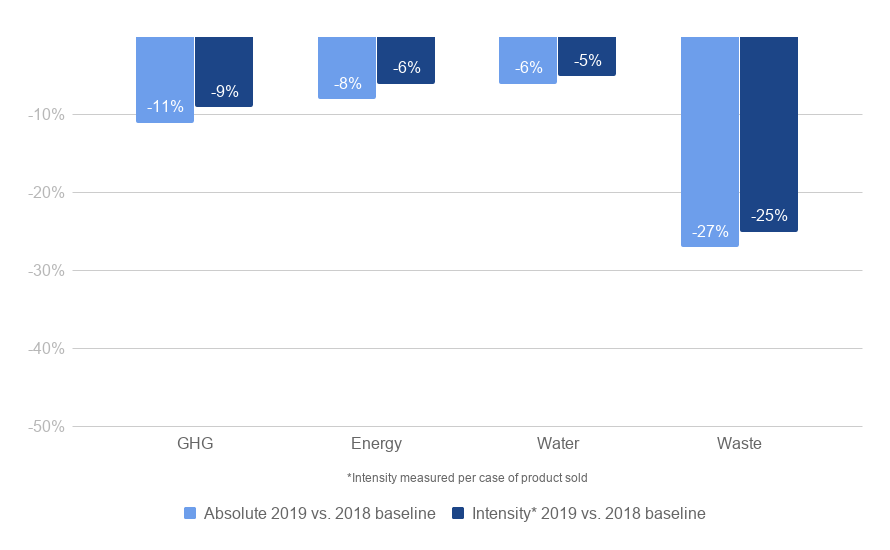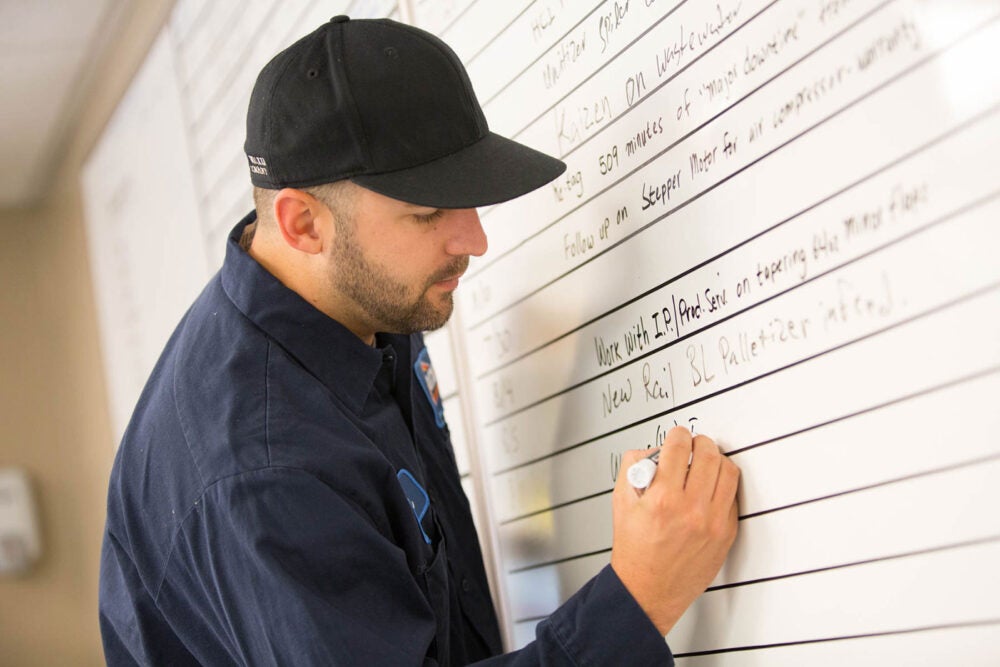Sustainability in Our Facilities
As part of Clorox’s IGNITE strategy ESG goals, we have committed to science-based climate action across our value-chain, 100% renewable electricity in our US and Canada operations, and zero-waste-to-landfill in our global facilities. As we pursue these goals, we will continue to drive efficiency improvements that minimize our use of energy and water and generation of waste in our global operations. This builds on progress made during Clorox’s 2020 strategy period to drive more than 20% reductions in greenhouse gas (GHG) emissions, energy use, water use and solid waste-to-landfill in our offices, manufacturing and distribution operations.
All Clorox facilities follow a customized environmental management system (EMS) that tracks, reports and enables continuous improvement to help advance the company’s sustainability goals. The EMS also includes a task management system designed to identify and track compliance with applicable environmental regulations. Regulatory agencies —at both the federal and local level —conduct inspections regularly at all of our manufacturing facilities, focusing on the health, safety and environmental compliance of our product lines. Clorox also ensures an external or internal audit is conducted at all Clorox-owned manufacturing facilities at least once every two years, led by the company’s Global Safety and Environmental Team. And our Product Supply Organization provides employees with general environmental awareness and subject-specific training related to their roles, including annual regulatory training which is tracked in our EMS.

Progress Overview
Since establishing our first environmental sustainability strategy in 2008, we’ve made significant progress in reducing our operational footprint, both on an absolute basis as well as on an intensity — or per case of product sold — basis.
Footprint Reduction Summary (2008-2019)

Goal Period #1 (Centennial): 2007-2011
GOAL: ↓ 10% by 2013 for Energy, GHG Emissions, Water; 20% by 2013 for Waste
RESULT: Exceeded or on Track
With 2007 as our baseline, we embarked on achieving our first set of goals by 2013. Four years into our six-year goal period spanning 2008 to 2013, we exceeded three of our four goals. Specifically, we surpassed our:
- GHG emissions reduction goal of 10% (per case of product sold) by 6% points
- Water reduction goal of 10% (per case of product sold) by 4% points
- Waste-to-landfill reduction goal of 20% (per case of product sold) by 7% points
This allowed us to reset our goal period at the end of 2011, two years ahead of plan.
Footprint Reduction Goal Period #1 (2008-2011)

Goal Period #2 (2020): 2012-2018
GOAL: ↓ 20% by 2020
RESULT: Exceeded or on Track
Using 2011 as our baseline, we targeted new goals to reduce our GHG emissions, energy consumption, water consumption and solid waste-to-landfill by 20% (per case of product sold) by 2020. As of 2018, seven years into our nine-year goal period, we exceeded three of the four goals and were on track to deliver all goals by 2020, having reduced:
- GHG emissions by 33%
- Energy by 18%
- Water usage by 21%
- Waste-to-landfill by 21%
These are additional reductions, measured on a per-case-of-product-sold basis versus 2011, on top of reductions attained between 2008 and 2011.
Footprint Reduction Goal Period #2 (2012-2018)

Goal Period #3 (IGNITE): 2019-2030
As part of our ambition to be a leader in environmental sustainability, we’re focusing on science-based climate action and waste reduction through the following goals:
- Set and achieve science-based targets to reduce greenhouse gas (GHG) emissions in our operations (scope 1 and 2) and across our value chain (scope 3)†
- 100% renewable electricity in the U.S. and Canada in 2021
- 100% global facilities zero-waste-to-landfill by 2030 (plants by 2025)*
As we pursue our goals, we will continue to drive efficiency improvements and report our energy, GHG emissions, water and waste footprints vs. our 2018 baseline year and advance a more localized approach to water stewardship.
* Where infrastructure allows
† Will set science-based targets (SBTs) for GHG emissions in coordination with and to be approved by the SBT initiative by October 2021
Footprint Reduction Goal Period #3: 2019-2030

CDP Reporting
Clorox is a member of The Carbon Disclosure Project (CDP) a not-for-profit organization that runs a global system for investors, companies, cities, states and regions to manage disclosure of their environmental impacts. As part of our commitment to transparency, we annually report our greenhouse gas emissions, water management and climate change strategies and progress through CDP. A complete listing of historical reports can be found on the CDP website. Our most recent reports are also shown here:

